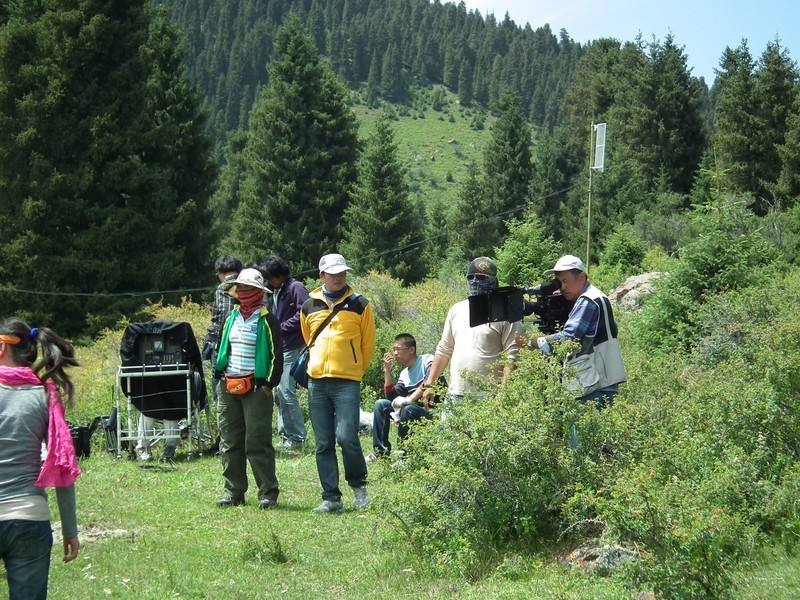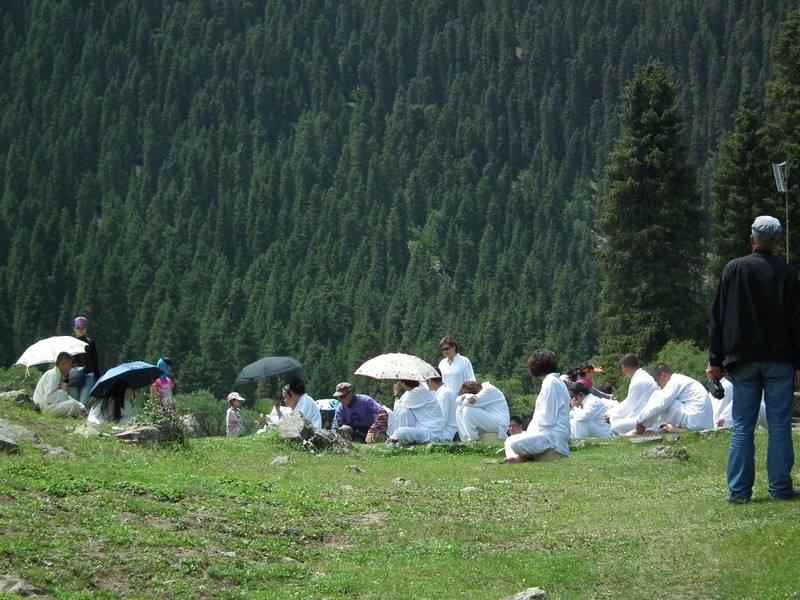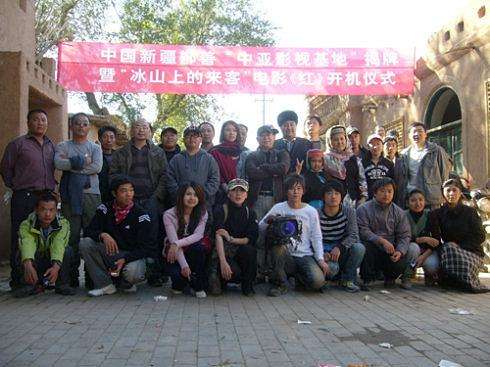Making Films and Watching Films
4 min readIn recent years, “Warriors of Heaven and Earth”, “Crouching Tiger, Hidden Dragon”, “Seven swordsmen from Tianshan”, and other films have been finished in Xinjiang. Xinjiang has become the preferred location to show vicissitudes, mysterious legends, pluralistic charm and visual impact in the screen pictures.
Many people knew Xinjiang through the film “Visitors on the Ice Mountain”, which depicted the life of struggling against Secret Agents in the border areas, and integrated rich ethnic color and lyrical tone, vivid reproducing the beautiful scenery of the northwest frontier and folk customs of the Tajik people. The interlude song “Why Are the Flowers so Red”is still popular nowadays, which has once influenced one generation. However, the film was not originally produced in Xinjiang.

The film industry is the most concrete and the most direct form of artistic expression out of all of the art industries. Xinjiang people are direct by nature, so what would the films produced by them like We should start with the film studio of Xinjiang.
Tianshan Film Studio, the own movie studio of Xinjiang, was built in 1956, and went into operation in 1958. The first work is the documentary “Commander Zhu Visited Xinjiang”, the first color documentary was “Sunlight Shines in Xinjiang”in 1959, and the first movie was “Two Generations”produced in 1960. The film industry workers of Tianshan Film Studio came from over ten different nationalities. Since its establishment especially since the reform and opening up, Tianshan Film Studio has created more than 100 feature films.

Distinctive regional characteristics and diverse culture created the local films with a stigma of Xinjiang. Xinjiang is an ancient and mysterious place of vast territory, many nationalities, diverse cultural forms, and in harmony all nationalities are in harmony. While the impression of Xinjiang in many people’s mind is still the desert, mountains, and camels, the modern Xinjiang is disseminated and popularized through the modern art means of film, as well as the new look of Xinjiang and Xinjiang people, which is bound to play an active role for the great development of various undertakings in Xinjiang.
In 2011, the film of “Under the Sky of Urumqi”showed the city truly, objectively, and artistically to the national audience. The film vividly depicted the city character of “integration” of Urumqi.”Integrationrefers to tolerance that people of all nationalities can freely breathe the same air, and culture of each nationality can harmoniously coexistent;
The multi-culture finally assembles a magical power, exuding a unique charm. When the camera lens switched to the present from 1960s, we can clearly see the earth-shaking changes in Urumqi, while Urumqi is a microcosm of Xinjiang.

If you want to understand the ethnic minorities in Xinjiang, please watch: “The Blooming Sunflower”which reflecting a Uygur grandmothe bringing her granddaughter to find her father, “Flowers” and “Beautiful Home”reflecting the Kazakh culture, “Songs Travelling” reflecting the lives of Muslim, “The Arrow Village Girl” reflecting the growing experience of Sibo archery champion, and”Under the Sky of Urumqi”reflecting the great unity of all ethnic groups in Xinjiang. These films which are full of ethnic characteristics vividly demonstrate the beauty of Xinjiang and the cuteness of the Xinjiang people.
On the basis of the red classic movie “Ana Samarkand” in 1960s, Xinjiang artists from all nationalities meticulously adapted the 20-episode TV series”Ana Samarkand”, and was broadcast on CCTV in May 2013, filling the gaps of no Xinjiang local original TV series broadcast on CCTV channel in prime time in the history, people of all nationalities in Xinjiang were so joyful. The positive theme, realistic human story, vividly reproduced the important experiences of liberation of all ethnic groups in Xinjiang under the leadership of the Communist Party, showing the charm and style of Xinjiang Uygur ethnic groups. People of all nationalities in Xinjiang are seeking common prosperity and development.
In 2004, the feature film “Beautiful Home”with rich Xinjiang ethnic characteristics was screened in Kazakhstan, becoming the first film that has entered the Central Asian film market, which has caused great repercussi.in2006,the”Turpan Love Song”of ethnic minority subject matter was brought to France and the United States to participate in the Chinese Film Festival. On the award ceremony of the thirteenth China Movie Awards, Xinjiang homegrown film”Big River” won the outstanding film award, and “Mamat’s 2008” won the excellent children’s film award; and “Big River”also won the best screenplay prize, as well as the nomination of outstanding director award and the outstanding film music award. “True Passion”, “the Singing Potatoes”, “Dalieshi Prairie”, and many other films have also won the national award.








